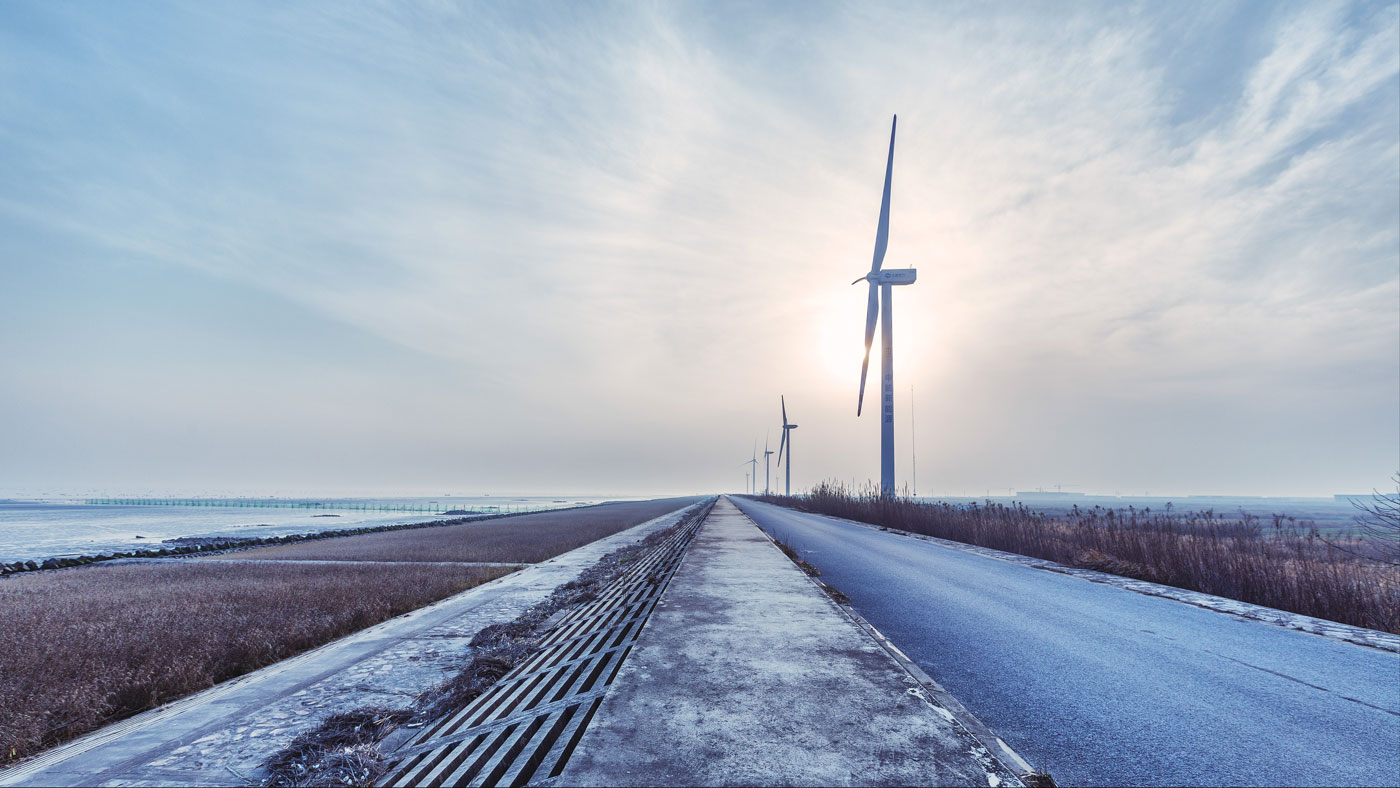In Asia Pacific, the renewable power market is evolving rapidly. Changes in policy and prices are driving solar demand down and offshore wind capacity up. Longer term, improvements to infrastructure and technology are expected to drive exponential growth.
What is the appetite for solar and wind power in Asia Pacific? Analysts Robert Liew and Rishab Shrestha recently met with a group of renewables journalists to discuss a region in the midst of an energy transition. Fill in the form to access the 40-minute presentation.

Our forecast indicates that Asia Pacific's offshore wind capacity will rise 20-fold to 43 GW in 2027.
Winds of change blowing offshore in Asia Pacific
Our forecast indicates that Asia Pacific's offshore wind capacity will rise 20-fold to 43 GW in 2027.
Significant growth in China and Taiwan
Leading the charge is China, which offshore wind capacity is expected to grow from 2 GW last year to 31 GW in the next decade. Next is Taiwan which will account for 20% or 8.7 GW of offshore wind capacity by 2027, making it the largest offshore wind market in Asia-Pacific excluding China (APeC) by 2020. Currently, Taiwan relies heavily on coal, gas and nuclear for power. However, the government has pledged to shut down nuclear plants by 2025, creating a gap of 5 GW. Renewable energy such as offshore wind is poised to help fill this gap – as more than 5.7 GW of offshore wind projects have been approved.
East Asia needs large-scale investment
Driven by declining prices, a few markets in Asia Pacific have set ambitious offshore wind targets. However, not every market is set for success as a stable domestic offshore supply chain and strong government support are needed to sustain growth in the long term. Together with South Korea and Japan, East Asia needs upwards of US$37 billion in investments to meet the mammoth growth in offshore wind capacity over the next five years.
Costs to fall as infrastructure improves
The good news is that prices are coming down. Globally, future offshore wind prices are projected to be competitive with traditional thermal prices by 2025 driven by auction mechanisms. This should attract investments in offshore wind, though Asia Pacific is still playing catch-up with Europe as it is still in the process of establishing a dedicated infrastructure to support large scale offshore growth.
Despite the enormous potential of offshore wind in Asia Pacific, key challenges around technology maturity and limited regional offshore wind supply chain remain. Mainstream offshore technology used in China still lags behind that of European offshore. For example, leading Chinese offshore turbine supplier Shanghai Electric has largely relied on technology licenses from European turbine supplier, Siemens-Gamesa Renewable Energy, and regional turbine suppliers still do not offer offshore wind turbines in the >8MW class which are now preferred by leading offshore wind developers.
Challenges remain in tech and supply chain
Outside of China, local turbine suppliers in Korea and Japan are investing in new and larger offshore machines comparable to western turbines. This will take time as it will require more research and development, testing new demonstration units, and establishing developer buy-in.
In addition, to support the ambitious growth in offshore wind capacity, a robust supply chain needs to be developed. Maritime infrastructure, establishing a local vessel fleet to install and service offshore wind power plants, and upgrades to transmission systems will take time to be built up. This will require strong commitments by regional governments to support and invest in the growth of offshore wind.
-
43 GW
Forecast APAC offshore wind capacity in 2027
-
31 GW
Forecast China offshore wind capacity in next ten years
-
8.7 GW
Taiwan's contribution to offshore wind capacity by 2027
-
US$37 billion
East Asia's required investment to grow offshore wind capacity
Fortunately, the experience in Europe is that when such support systems are in place, growth will be exponential given the increasing competitiveness of offshore wind prices, and developers eager to take advantage of economies of scale, local suppliers and opportunities in new markets.

Robert Liew
Director, Asia Pacific (excluding China) Renewables Research
Market specialist with over 15 years of power and renewables research experience.
Latest articles by Robert
-
Opinion
How Chinese companies are expanding their global footprint
-
Opinion
What to look for in Asia Pacific renewable energy in 2025
-
Opinion
How are companies managing excess capacity in Asia Pacific’s solar supply chain amid a solar boom?
-
Opinion
Australia’s energy revolution: the promise of battery storage and hydrogen
-
Opinion
Can wind power become truly carbon neutral?
What's on the horizon for APAC solar market?
We forecast that solar demand will decline in Asia Pacific for the first time this year after a decade of stellar growth. Compared to 2017, the region's solar demand will dip 18% to 59 gigawatt (GW) in 2018 due to declining installations in China, India and Japan.
China demand to contract
China has had an unprecedented growth in photovoltaic (PV) installations over the past few years. As a result, installation frequently surpassed the annual provincial construction quota for utility-scale projects and led to delays in subsidy payments and curtailment. To regain control of the pace of solar development and reduce the subsidy burden, China implemented several stop-gap measures this year. These measures are expected to result in demand contraction but will also help lower the pace of subsidy deficit. Even with the contraction, China will remain the largest market for solar installation annually throughout the next five years.
Japan installations to slow
In Japan, high levels of FIT have attracted more than 80 GW of solar pipeline capacity despite the high-cost environment. However, due to issues with the transition from FIT to auction for projects greater than 2 MW, utility-scale solar installations will decline significantly. A similar trend is apparent across APAC, with the phase out of susidies and transition towards auctions resulting in lumpy demand.
Asia Pacific capacity set to grow, costs to fall
That being said, Asia-Pacific will still add 355 GW of new solar capacity over the next five years, and this is partly attributable to the reduction in PV capital cost globally. By 2023, Wood Mackenzie expects the levelised cost of electricity (LCOE) to fall by 25% to US$55/MWh. This makes solar energy more competitive compared to traditional energy sources, such as gas and coal, and could drive additional demand from emerging markets in the region.
Markets with attractive policies such as high FIT (e.g. Taiwan and Vietnam) and Renewable Portfolio Standards (South Korea and Philippines) are likely to benefit the most. Furthermore, as LCOE approaches the wholesale power price levels, as in Australia, for example, voluntary procurement will become a significant driver of solar installations.
-
59 GW
APAC solar demand will dip 18% to 59 GW in 2018
-
80 GW
Japan's solar pipeline capacity
-
355 GW
New solar capacity in APAC by 2023
-
US$55/MWh
Forecast levelised cost of electricity (LCOE) by 2023
The key trend we are seeing is the phase out of subsidies and transition towards auctions, which is leading to lumpy demand in the region.

Rishab Shrestha
Principal Analyst, Europe Power
Rishab is a principal analyst at Wood Mackenzie, focusing on European power and renewables markets.
Latest articles by Rishab
-
Opinion
Elevated subsidies enable offshore wind to end 2023 on a high note
-
Opinion
Abundant, low-cost renewables will transform Nordic power markets
-
Opinion
European power markets emerge from the energy crisis
-
Opinion
Renewable energy costs continue to fall across Europe







